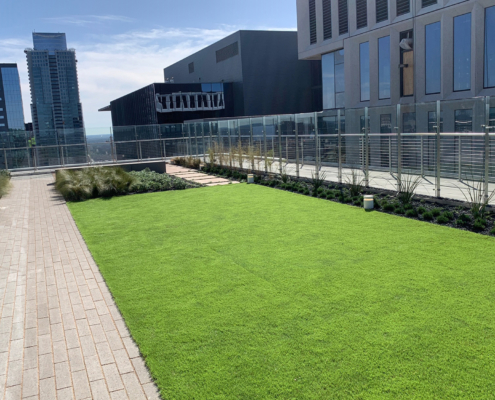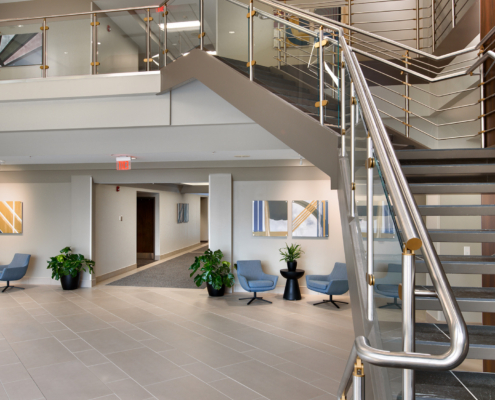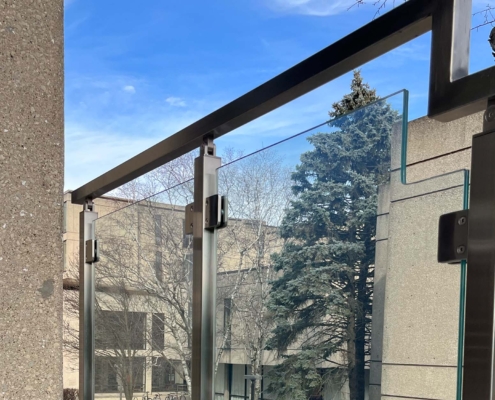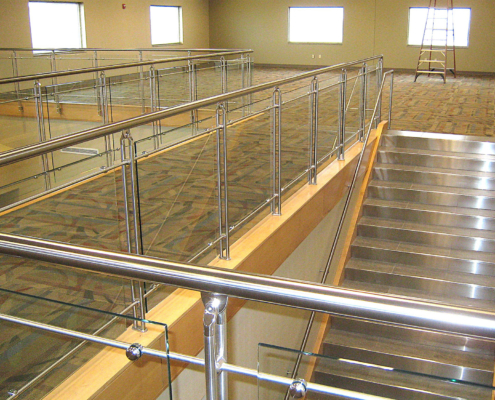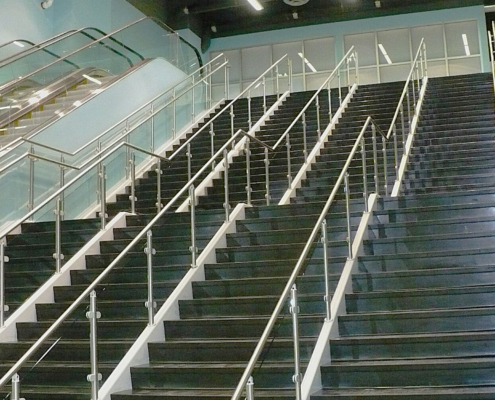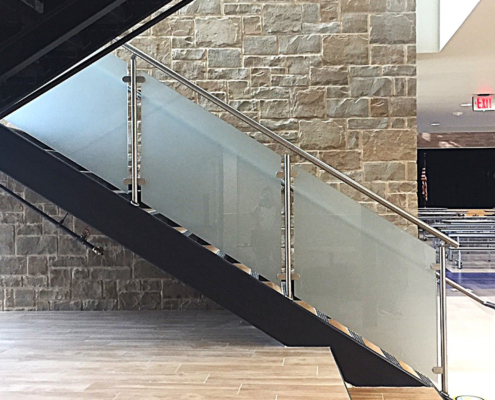Why the Distinction Matters
Choosing between a commercial or residential railing system is about meeting the specific demands of each environment. Commercial spaces deal with higher traffic, stricter regulations, and greater liability, requiring more robust, code-compliant systems. Residential applications, while still bound by safety standards, often allow for more flexibility in design and materials.
Different Purposes, Different Pressures
One of the main reasons we differentiate between commercial and residential railing systems is how each environment is used. Commercial spaces—like malls, office complexes, or hotels—often experience higher foot traffic, which means railings must withstand more wear and tear. Residential properties, on the other hand, typically see fewer people moving through, but they still require safety features that comply with local building codes.
Compliance and Liability
In a commercial setting, ignoring safety standards can lead to serious liability issues, legal fines, and reputational damage if accidents occur. Residential properties also need to meet safety regulations, but the requirements may be slightly more flexible or easier to implement. Regardless of the environment, a railing that fails to meet code can compromise both occupant safety and the property’s value.
Building Codes and Regulations
While commercial and residential railing systems must meet safety requirements, the codes governing them differ significantly in scope and strictness. Commercial projects are typically held to higher standards due to the increased risk associated with public access and heavy foot traffic, while residential codes often allow for more design flexibility and lighter structural demands.
Commercial Codes
Commercial railing systems often face stricter guidelines related to height, load-bearing capacity, and infill spacing. These rules exist to manage the risk associated with larger crowds and frequent use. For example, in many regions, a commercial railing must meet a specific minimum height (often around 42 inches) and be able to withstand a horizontal load of at least 50 pounds per foot or more, depending on local standards.
Residential Codes
When it comes to a residential railing, building codes can be somewhat more lenient. A typical requirement might be a 36-inch minimum height for decks or balconies, along with a less rigorous load-bearing standard. That said, local variations apply, and it’s crucial to check municipal or state regulations. While the bar may be set slightly lower for residential railings, safety remains important—especially in homes with children, pets, or older adults who may rely on the railing for support.
Universal Compliance Tips
Whether you’re working on a commercial property or installing a residential railing, building codes can vary widely by location and project type. Taking the time to confirm local requirements and anticipate future use can prevent costly mistakes and ensure long-term safety and compliance. Keep these best practices in mind as you plan your railing system:
- Consult Local Authorities: Always verify the latest codes with local building departments or licensed inspectors.
- Understand Occupancy Limits: In multi-family residences or mixed-use developments, commercial-grade requirements might apply in certain common areas.
- Plan for the Future: If you anticipate turning a residence into a rental property or hosting large events, consider opting for stronger, commercial-grade railings to cover broader eventualities.
Material Choices for Commercial vs. Residential
The materials you choose for a railing system have a direct impact on its performance, appearance, and maintenance needs—especially when comparing commercial and residential railing applications. Commercial environments demand rugged, low-maintenance materials that can withstand heavy use and still look professional. In contrast, residential settings offer more flexibility for aesthetic expression and decorative detail since the wear and tear tend to be less intense.
Commercial Settings: Durability Takes Center Stage
High-traffic commercial locations call for materials that can handle constant use and occasional rough treatment—think rolling luggage, cleaning carts, or large crowds. Common picks include:
- Stainless Steel – Excellent corrosion resistance and modern aesthetics.
- Aluminum – Lightweight, rust-proof, and cost-effective for large projects.
- Tempered Glass – Creates an open, upscale feel but may require frequent cleaning in busy areas.
Commercial spaces might also incorporate more industrial-grade components, like heavy-duty fittings and thicker glass panels, to ensure the railing stands the test of time.
Residential Settings: Balancing Style with Simplicity
For a residential railing, homeowners often have more freedom to explore decorative elements, unique finishes, and materials that match their personal taste. Options include:
- Wood – Offers a warm, classic look, though it may need periodic sealing or staining.
- Wrought Iron – Brings a timeless, ornamental flair—perfect for traditional or rustic homes.
- Cable Railings – Blend minimalism with a modern vibe, requiring occasional tension adjustments.
While durability remains important, the everyday stresses on a residential railing system tend to be lower, allowing for more creative material choices.
Design and Aesthetics
While railing systems are primarily installed for safety and support, their visual impact shouldn’t be underestimated—especially when they occupy prominent areas like staircases, balconies, or entryways. The design of a residential railing or commercial system can either elevate the overall look of a space or feel like an afterthought. Aligning materials and styles with the surrounding environment, railing systems can enhance branding and contribute to a cohesive design experience.
Commercial Railings for Branding and Cohesion
In a commercial setting, railings often serve not only a functional purpose but also a branding one. A high-end hotel might opt for elegant glass and brass railings to reflect its upscale image, while a tech startup’s office could feature sleek, brushed-metal designs in open workspaces. When designing for commercial spaces, consider how the railing complements your brand identity—colors, materials, and shapes can subtly reinforce the overall theme.
Residential Railings—Where Personal Taste Meets Practicality
For a residential railing, homeowners have significant freedom to infuse personality. Rustic wood rails might enhance the charm of a countryside cottage, whereas minimalist steel or aluminum can lend a clean, modern style to a city townhouse. However, design choices shouldn’t compromise safety or maintenance—ornate wrought iron might be gorgeous, but if it proves too labor-intensive or doesn’t meet code for baluster spacing, it may not be the best fit.

